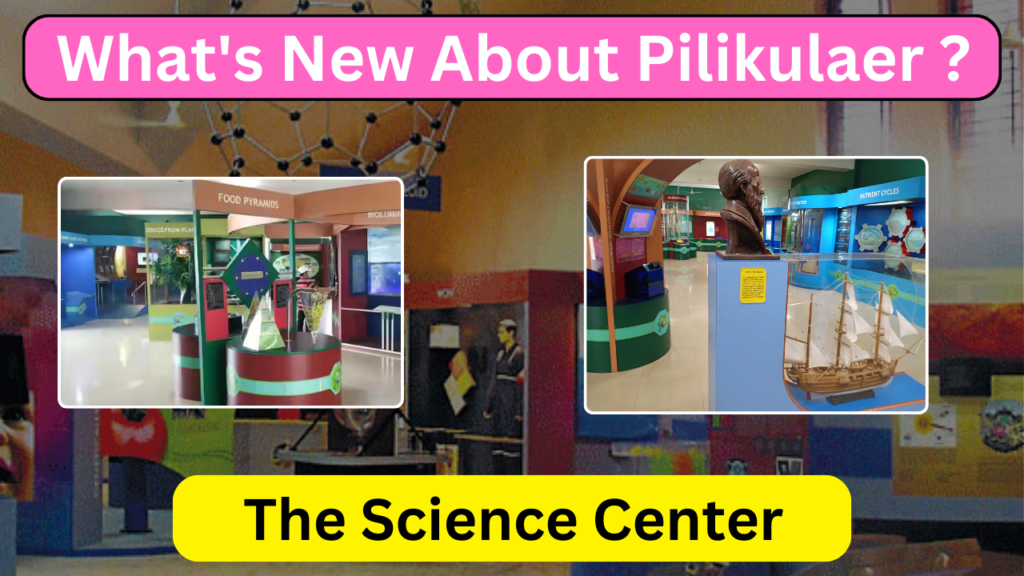
Mangaluru, a well-known port city, is located between the Arabian Sea and the Western Ghats. The city is known for its economic and educational importance, the city has glimpsed a wave in its increasing population due to the foundation of numerous general and professional educational institutions in recent years.
It is India’s natural port, now, the city has been considered a hub for economic activities in past decades. Besides, the city attracts tourists with its rich offerings. Some of the attractions of the city are religious centers, panoramic beaches, rivers, waterfalls, trekking-friendly mountains, historical monuments from the pre-independence era, educational organizations, and hospitals.
Now, we are talking about the Pilikula Development Authority (PDA) which is situated in the District Administration of Dakshina Kannada, located in the scenic city of Mangaluru, Karnataka. The center is a significant eco-education and tourism initiative.
Pilikula is an integrated theme park that is spread over 370 acres. You will get prominent attractions here such as diverse cultural, educational, and scientific attractions. You will see the tropical forests and the serene Pilikula Lake in the park. It offers a unique blend of natural and recreational adventures. The main places to visit in the park are given below.
- Arboretum
- Biological Park
- Science Centre
- Lake Park with a Boating Centre
- Swami Vivekananda Planetarium
- Heritage Village
- Water Amusement Park
- Golf Course
- Ayurveda Health Therapy Centre- ongoing developments
- Tourist Cottages- ongoing developments
This pioneering project in India is inspired by the idea of combining the region’s natural and cultural heritage with modern recreational amenities. Situated near the Western Ghats, one of the 34 globally identified biodiversity hotspots, Pilikula highlights the conservation of the area’s unique wildlife and plant species.
It also operates as a showcase of the affluent heritage and coastal culture of Dakshina Kannada. In essence, Pilikula is an exhaustive educational and recreational destination, offering a must-visit experience for visitors exploring this part of the world.
Objectives
- to promote science and technology advancements for the welfare of humanity.
- to establish an educational and resource hub for students and teachers so that they can expand their knowledge at this center.
- to be aware and foster a scientific mindset toward environmental conservation while promoting eco-education and eco-tourism among the public.
- to conserve biodiversity
- to provide facilities for research & development to the students.
- to preserve culture and heritage.
- to share scientific knowledge and best practices with various targeted people.
- to identify, support, and nurture creative scientific talent, specifically in children and youth.
- to highlight priority areas in science /technology that lead to the Karnataka state’s long-term development.
- to organize and support training programs, workshops, seminars, conferences, talks, consultancy services, and exhibitions at the center.
- to improve science education using the idea of experiential learning.
- to enlighten curiosity and creativity in the students.
- to popularize astronomy, space science, technology, and innovation by developing engaging and stimulating learning experiences for students and the public.
- to promote the joy of learning science by creating positive experiences that highlight its history, philosophy, and connection to heritage and culture.
- to provide a platform for educational outreach activities encompassing social studies, arts, and culture.
- to integrate science with tourism by exploring the diverse aspects of Pilikula through the lens of “science through tourism and tourism through science.”
History
Pilikula is a name that encapsulates its essence. According to folklore, this area was once frequented by tigers visiting a pond, giving rise to the name Pilikula, where ‘Pili’ means tiger and ‘Kula’ means pond. Pilikula Nisargadhama was envisioned by Bharat Lal Meena, IAS, the former Deputy Commissioner of Dakshina Kannada district. A farsighted and efficient administrator. He initiated this project to maintain the biodiversity, heritage, and culture of Coastal Karnataka.
He was supported by John Richard Lobo/JR Lobo/ KAS. He is an esteemed Karnataka State Administrative Service officer who served as the founding Executive Director. Over 18 years, JR Lobo played a key role in collaborating with government departments, ministers, corporate leaders, and the project’s founder chairman to expand and develop new units within Pilikula Nisargadhama.
The project started in 1996 with the dual goals of environmental conservation and heritage preservation while also heightening tourism. Traversing 370 acres of dense natural habitat, Pilikula quickly became a favored tourist destination due to its serene and picturesque environment.
Henceforward, the site was renamed Dr. Shivaram Karantha Pilikula Nisargadhama (Dr. SKPND) following directives from the High Court and the Government of Karnataka. In line with its growth, the Pilikula Regional Science Centre Society and Dr. SKPND were dissolved, and the Pilikula Development Authority Act, 2018 (Karnataka Act No. 09 of 2018) was established through a government notification (No. SAMVYASHAE 08 SHASANA 2018, Bengaluru, dated 09 March 2018). The act came into effect on 24 Dec 2019.
The Department of Science and Technology, Govt of Karnataka, now serves as the nodal dept overseeing the Authority, providing supervision, control, and direction to ensure the continued success and growth of Pilikula. The Government exercises supervision and control, and issues directions to the Authority.